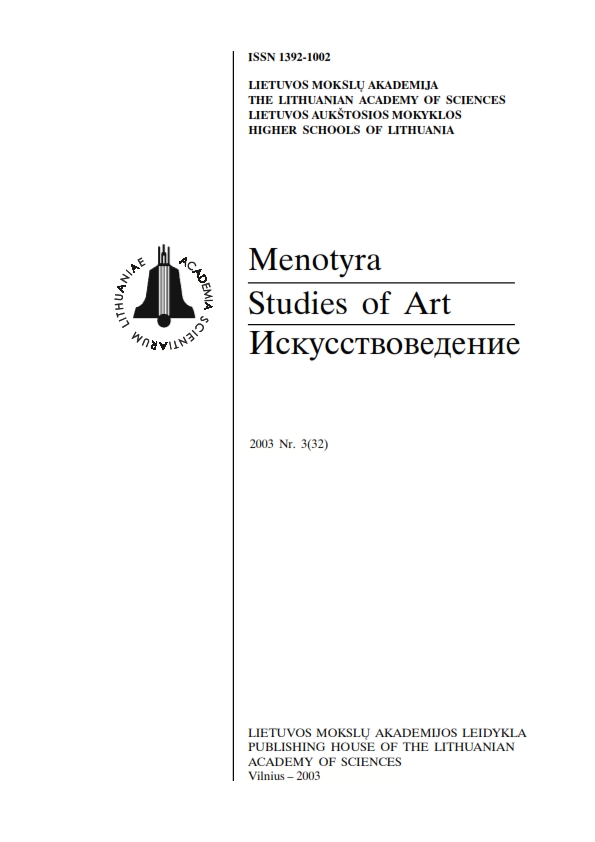Kristupo Radvilos (1585-1640) sutartys su amatininkais
Krzysztof Radziwiłł's (1585-1640) contracts with artisans
Author(s): Aistė PaliušytėSubject(s): Cultural history, Visual Arts, 16th Century, 17th Century
Published by: Lietuvos mokslų akademijos leidykla
Summary/Abstract: The article analyses the available contracts with craftsmen drawn up by hetman of the Grand Duchy of Lithuania Krzysztof Radziwiłł and reveals the creative conditions of craftsmen in the manor of this nobleman. The majority of the contracts were concluded in Vilnius, a city where artisan workshops were abundant. Vilnius served as a place where Radziwiłł concluded contracts for works to be carried out at his other private dominions as well. By the number of contracts concluded Vilnius was closely followed by Biržai, a hereditary centre of the Radziwiłł family. Because of the constructions carried out at Biržai Castle in the second and fourth decades of the 17th century, the castle had been a working place for artisans of various crafts for a long period of time.Radziwiłł's contracts with craftsmen were of two types: those obliging artisans for a long-term work at the manor and those for one-time art commissions. Most of the remaining contracts concern the creation of specific objects of art and architecture. Among the contracts of this type are those with the organ-master Mawrycy of Riga, the masons Krzysztof Seifert and Henryk Handle from Vilnius, the carpenter Jakub Szydak and others. The history behind the contracts shows that the most important criteria for the selection of artisans were their qualification and experience at the manors of other noblemen and the court of the Grand Duke.Contracts for one-time orders traditionally set out the object, the period within which it had to be finished, and payment details. The contracts of this type were detailed: they discussed the structure of the artwork commissioned, functional parts, materials, techniques and methods of decoration. The contracts also revealed the hetman's interest in functionality and masterly, qualitative execution and preference for expensive materials and splendour of representative pieces.The other group of contracts includes those for long-term employment. It was sought to establish a strong relationship with craftsmen required for everyday needs: blacksmiths, metalworkers and woodworkers. In 1621 Radziwill concluded contracts in Biržai with the metalworker Matys Krzyżanowski, the carpenter Hanus Szeyler and the gunsmith Krzysztof Reyp for the works at Biržai Castle; contracts of the same type were drawn up with the mason Korneliusz Kieyzer and other craftsmen. Some of the long-term contracts provided for accommodation of the artisan at the private domain of the nobleman. In terms of payment methods and remuneration amounts, most of the artisans hired for long-term work did not differ much from the nobleman's servants, on the one hand, and artists, painters and sculptors on the other; this shows that their status at the manors was similar. The various aspects of management and monitoring discussed in the contracts show the influence of the contractor on the artisans' production.
Journal: Menotyra
- Issue Year: 2003
- Issue No: 3(32)
- Page Range: 44-51
- Page Count: 8
- Language: Lithuanian

